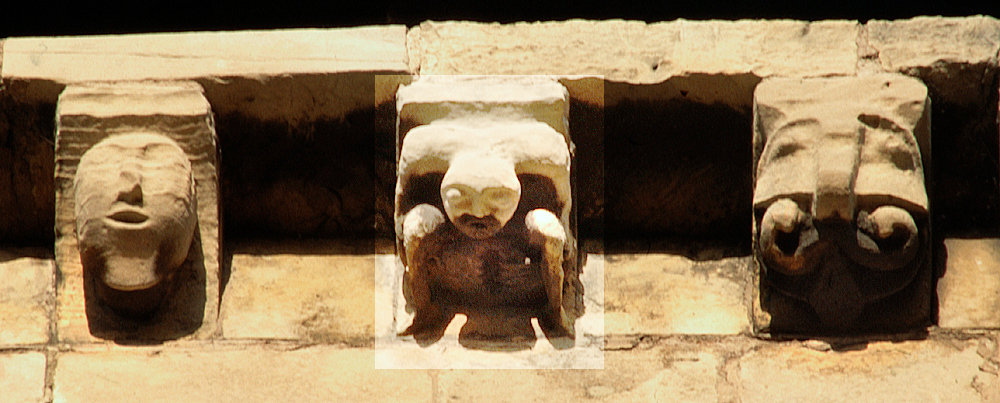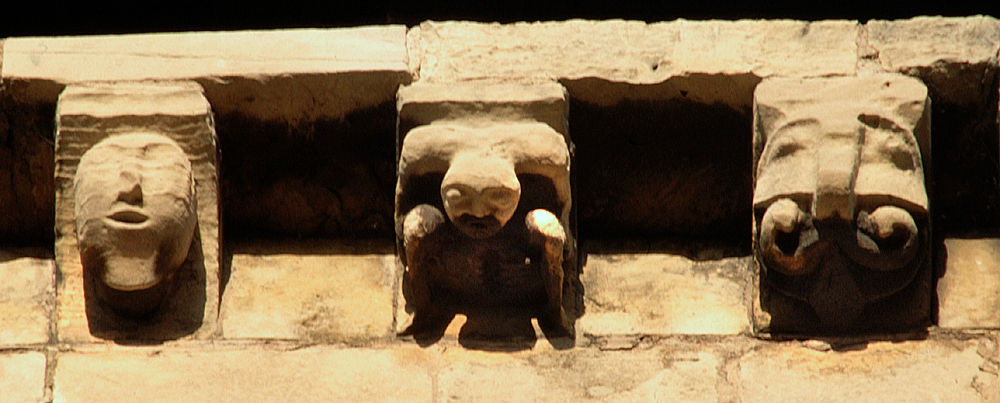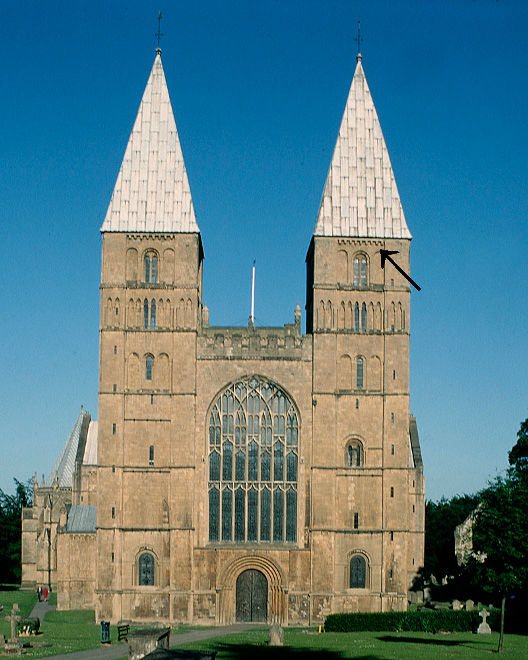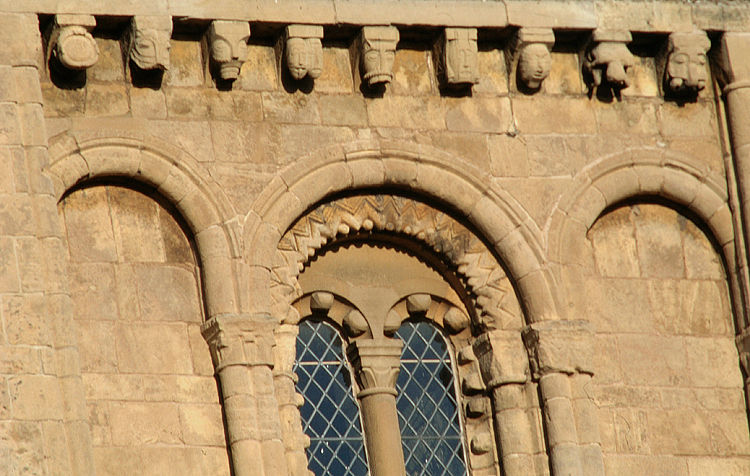Contents

The Figure
This figure lies on the right hand tower of Southwell Minster in Nottinghamshire and was discovered by Norwegian Art Historian Kjartan Hauglid.
The minster goes back to the Saxon period and is believed to have been founded in 687 by Paulinus the first archbishop of York.
King Eadwing gifted land at Southwell to the church in 956 and it is on this land that the minister was built.
Construction of the minster started in 1108 replacing the earlier Saxon church from which a tesselated floor and a tympanum still exist.
The building was completed in 1150 which would seem to place the carving of the sheela na gig some time in the first half of the 12th century.
The carving itself is of a doward facing figure with hunched shoulders with both hands reaching below the legs to pull open an exaggerated
vulva (see above). Like a number of other figures e.g Stoke Sub Hamdon the exhibitionist nature of the carving can only really be seen from below
the figure. People viewing from further away simply see a hunched over figure in almost an Atlas like pose. This begs the question of the nature of
the figure if the exhibitionism cannot be seen easily then it would seem to argue against a didactic explanation of the figure and may
possibly lend weight to the argument that it is there as an apotropaic symbol warding off evil.
My thanks go to Kjartan Hauglid for permission to use these excellent photographs of the Southwell sheela na gig



number of other romanesque motifs such as the bridled animal head and the double human heads.